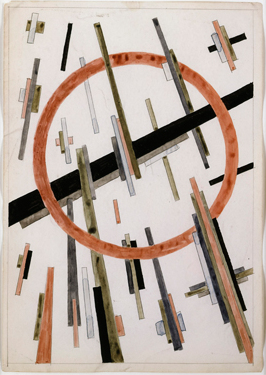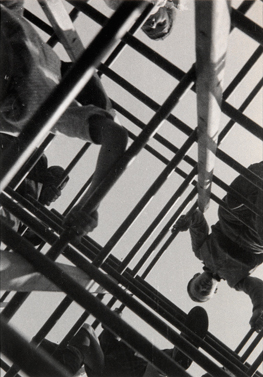
Vladimir Tatlin, Modell till monument till III:e internationalen, 1919–1920, rekonstruktion 1968/1976 © Vladimir Tatlin. Foto: Moderna Museet/Albin Dahlström
Russian Avant-Garde
Visions of a Future
14.9 2013 – 12.1 2014
Malmö
Between 1905 and the 1930s, Russia and the Soviet Union experienced radical political change and furious social development, and this was also reflected in the field of art. The Russian avant-garde was far from a homogeneous artist group, but they all shared a desire to express their era. They were inspired by the latest trends in Western contemporary art, such as cubism and Italian futurism, but also by Eastern folk art and icon painting.
In Russian Avant-Garde – Visions of a Future, 150 works highlight several of the main tendencies that emerged in Russia at the time, such as constructivism and suprematism. The exhibition demonstrates how the new radical art was used as an ideological tool to create a new world, but it also presents artists who were opposed to art in the service of the state.
Naturally, highlights such as Vladimir Tatlin’s visionary project, the model for a monument for the Third International, “Tatlin’s Tower”, will be featured, along with Kazimir Malevich’s Black and White. Suprematist Composition – both of which are being shown in the Öresund region for the first time. The multi-faceted Alexander Rodchenko is highlighted in the exhibition, especially for his work in revolutionising the art of photography. Key works by Lyubov Popova, Alexandra Exter and Wassily Kandinsky, and, above all, by the Swedish pioneer of abstract art Hilma af Klint, will also be shown.
The exhibition also includes many propaganda posters, and avant-garde films such as the critically acclaimed Battleship Potemkin by Sergey Eisenstein and Dziga Vertov’s Man with a Movie Camera, and a unique portfolio of Soviet periodicals that have never before been shown.
Curator: Iris Müller-Westermann
The exhibition is supported by








